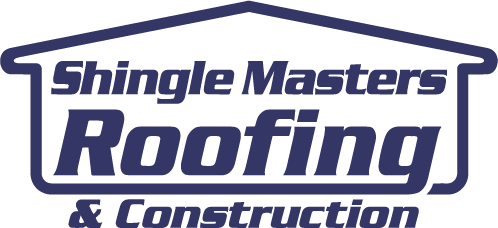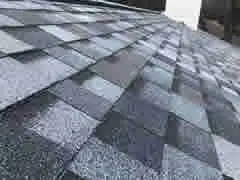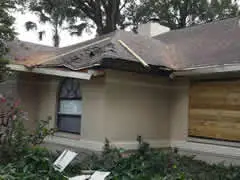Hurricane-Ready Roof Checklist for SouthShore Homeowners
Hurricane-Ready Roofs: A Homeowner’s Checklist for Apollo Beach, Ruskin, Sun City Center, Wimauma, and Gibsonton
Key Takeaways
- Get a professional inspection before June 1 to verify fastener patterns, sealed flashings, ventilation, secondary water barrier, and clear gutters.
- Target vulnerabilities: wind uplift, water intrusion at penetrations (vents, chimneys, skylights), and clogged drainage.
- Local risks vary: Apollo Beach and Ruskin face bayfront gusts and salt-air corrosion; Wimauma and Gibsonton contend with tree debris; Sun City Center must address manufactured-home attachments and low-slope tie-ins.
- Insurance benefits: A documented pre-season inspection can support claims and qualify your home for wind-mitigation credits.
- Hire licensed pros: Work with a licensed and insured contractor like ShingleMasters Roofing to meet Florida Building Code requirements.
Table of Contents
- What You Need to Know
- How It Works: The Professional Pre-Season Roof Assessment
- Cost, Timelines & Warranties
- Local Considerations for SouthShore Communities
- When NOT to DIY / Common Mistakes
- Insurance, Wind Mitigation & Storm Damage Claims
- Why Choose ShingleMasters Roofing
- Frequently Asked Questions
- Glossary of Roofing Terms
- Get Your Free Pre-Hurricane Assessment
- Sources
What Should I Check on My Roof Before Hurricane Season?
Before the season begins on June 1, a comprehensive roof checkup should confirm your home can withstand high-velocity winds and torrential rain. This involves examining the five most critical components of your roofing system: its wind resistance, water-shedding capabilities, ventilation, secondary protection, and drainage.
A professional assessment provides the documentation you need for insurance purposes and peace of mind.
Your Pre-Season Homeowner Checklist
- Check Fastener Patterns & Uplift Resistance: Your shingles, tiles, or metal panels must be secured according to Florida Building Code standards for high-wind zones. A professional can identify if the nailing pattern is sufficient to prevent shingles from lifting and detaching in hurricane-force gusts.
- Inspect and Seal Flashings: The metal strips around chimneys, vents, and skylights (flashings) are common failure points. Ensure they are free of rust, properly sealed, and reinforced to block wind-driven rain from entering your attic.
- Verify Soffit & Ridge Ventilation: High winds can create pressure differentials that try to lift the roof deck. Make sure your soffit vents (under the eaves) and ridge vents (at the peak) are securely attached and clear of debris so the system can breathe properly without compromising its integrity.
- Confirm Secondary Water Barrier: Beneath your primary roofing material lies a critical secondary water barrier, or underlayment. A professional inspection should verify this layer is intact, as it is your last line of defense if you lose shingles in a storm. Modern synthetic underlayments offer superior tear resistance.
- Ensure Proper Gutter & Downspout Flow: Gutters clogged with leaves and debris will cause water to pool along your roofline, potentially penetrating the roof deck and fascia. Clean your gutters thoroughly and ensure downspouts direct water far away from your home’s foundation.
How It Works: The Professional Pre-Season Roof Assessment
Getting a professional roof assessment is a straightforward process designed to identify and fix vulnerabilities before a storm hits. Here’s what you can expect when you partner with ShingleMasters Roofing.
A typical professional assessment moves from a detailed inspection to a clear estimate and, if needed, a timely repair or replacement. The goal is to ensure your roof is fully compliant with local codes and ready for the rigors of hurricane season.
Step 1: The Inspection (1–2 hours)
A certified inspector will get on your roof to perform a detailed visual and physical examination. They will check for loose or missing shingles, damaged flashing, signs of water intrusion in the attic, and verify that your roof’s components meet current wind-resistance standards. They will document their findings with photos and notes.
Step 2: The Estimate (24–48 hours)
Based on the inspection, we provide a comprehensive report and a detailed estimate. The report outlines any areas of concern, from minor sealant repairs to a full replacement recommendation. The estimate will clearly break down the costs for labor, materials, and permits.
Step 3: Material Selection (Varies)
If repairs or a replacement are needed, we’ll guide you through selecting the best materials for your home and budget. We’ll explain the benefits of impact-resistant shingles, enhanced warranties, and color options that complement your home’s exterior.
Step 4: Installation (1–5 days for a typical home)
Our certified crew handles everything, from delivering materials to removing the old roof and installing the new system. We follow strict safety protocols and adhere to all manufacturer specifications and Florida Building Code requirements. A site supervisor will be on hand to answer any questions.
Step 5: Cleanup and Final Inspection (1 day)
After the installation is complete, our team performs a meticulous cleanup of your property, including using magnetic rollers to pick up stray nails. A final inspection is conducted to ensure the work meets our high standards and is ready for the municipal building inspector, if required.
Step 6: Warranty & Registration (Ongoing)
We register your new roofing system with the manufacturer to activate your full warranty coverage. ShingleMasters provides a robust workmanship warranty alongside the manufacturer’s material warranty, giving you dual-layered protection.
What Do Hurricane-Ready Roofs Cost?
The cost of a new hurricane-ready roof in the Apollo Beach area varies based on materials, home size, and roof complexity. A professionally installed, code-compliant asphalt shingle roof offers excellent protection and value, while metal or tile options provide enhanced longevity and performance at a higher price point.
Warranties are a crucial part of your investment. A material warranty covers defects in the roofing products themselves, while a workmanship warranty covers installation errors. A manufacturer’s “lifetime” warranty typically refers to the period a single-family homeowner owns the house and is often prorated after an initial period.
| Material | Wind Rating (Typical) | Impact Class (Optional) | Typical Warranty |
|---|---|---|---|
| Architectural Shingles | Up to 130 mph | Class 3 or 4 | 25–50 Years (Prorated) |
| Metal (Standing Seam) | 140+ mph | Class 4 | 40–70 Years |
| Concrete/Clay Tile | 125–150+ mph | Class 3 or 4 | 50+ Years / “Lifetime” |
Local Considerations for SouthShore Communities
Each community in southern Hillsborough County faces a unique combination of environmental threats during a hurricane. Understanding these local risks is key to building a truly resilient roof.
Apollo Beach & Ruskin: Bayfront Gusts and Salt Air
For homeowners in Apollo Beach (33572) and Ruskin (33570), proximity to Tampa Bay is the biggest factor. Your roof is on the front line against corrosive salt spray and powerful, unobstructed wind gusts coming off the water.
- Salt Corrosion: Salt air aggressively corrodes metal components. Opt for corrosion-resistant materials like stainless steel fasteners and aluminum or properly coated steel flashings. Regular rinsing of metal roof panels can also extend their life.
- High-Velocity Winds: These bayfront communities are susceptible to the highest wind speeds in the area. Ensure your roofing system meets or exceeds the requirements for High-Velocity Hurricane Zones (HVHZ), even if not officially in one. This includes a 6-nail pattern on shingles and potentially peel-and-stick underlayment for a superior sealed roof deck.
Sun City Center: Manufactured Homes and Low-Slope Roofs
Sun City Center (33573) has a large number of manufactured homes and villas, many with low-slope or flat roofs. These structures have unique roofing challenges.
- Manufactured-Home Attachments: Roofs on manufactured homes are secured differently than on site-built homes. It’s critical that roof-to-wall connections and any additions or carports are properly tied in and sealed to prevent catastrophic failure.
- Low-Slope Tie-Ins: Many homes feature transitions from a sloped roof to a flat or low-slope roof over a lanai or Florida room. These tie-in points are highly prone to leaks and must be sealed with appropriate materials, like modified bitumen or TPO membranes, and integrated perfectly with the main roof.
Wimauma & Gibsonton: Tree Debris and Inland Winds
While slightly more inland, Wimauma (33598) and Gibsonton (33534) are not immune to hurricane threats. The primary risks shift from storm surge to tree damage and high winds that can funnel between buildings.
- Tree Debris: The beautiful, mature tree canopy in these areas becomes a significant threat during a hurricane. Falling limbs can puncture a roof deck. Consider installing Class 4 impact-resistant shingles, which are rated to withstand impacts from objects like hailstones and small debris.
- Overhanging Branches: Proactively trim any branches overhanging your roofline before hurricane season. This simple step can prevent thousands of dollars in damage from a limb crashing through your roof during a storm.
All work in these communities must comply with the Florida Building Code, and permits are typically required for a full roof replacement. You can verify permit requirements with the Hillsborough County Building Services department.
When NOT to DIY / Common Mistakes
While cleaning gutters may be a DIY task, most pre-hurricane roof preparations are not. Attempting complex roof work without proper training and equipment is dangerous and can void manufacturer warranties or even your insurance coverage.
Avoid these common and costly mistakes.
- Do not walk on a tile roof unless you are a trained professional; you can easily crack tiles, creating an entry point for water.
- Do not use a pressure washer on asphalt shingles. The high-pressure stream can strip away the protective granules that shield the shingle from UV rays, causing it to fail prematurely.
- Do not cover your entire roof with a tarp as a long-term solution. Tarps can trap moisture, leading to rot and mold on the roof deck. They are an emergency, temporary measure only.
- Do not apply caulk or roof cement over failing flashings as a permanent fix. This is a temporary patch that will likely fail under the stress of a hurricane, giving you a false sense of security.
- Do not hire an unlicensed or uninsured contractor. You will have no recourse if they perform shoddy work or get injured on your property. Verify licenses with the Florida Department of Business and Professional Regulation (DBPR).
Insurance, Wind Mitigation & Storm Damage Claims
A professional pre-season roof inspection is one of your most powerful insurance tools. The documentation serves as a “before” snapshot of your roof’s condition, which can be invaluable if you need to file a claim later. It can also help you secure valuable wind mitigation credits.
These credits are discounts on your homeowner’s insurance premium for features that reduce the risk of wind damage. A newer roof installed to the latest Florida Building Code often qualifies for significant savings.
Disclaimer: This is not legal or insurance advice; verify all coverage details directly with your carrier.
Should a storm damage your home, follow a clear process to ensure a smooth claim experience.
- Document the Damage: As soon as it is safe, take extensive photos and videos of the damage to your roof and any related interior damage.
- Verify Your Coverage: Review your policy to understand your hurricane deductible, which is often a percentage of your home’s insured value, and what is covered.
- File Your Claim: Contact your insurance company promptly to start the claims process. They will assign you a claim number and an adjuster.
- Meet the Adjuster: Have a trusted roofing professional, like ShingleMasters, present when the insurance adjuster visits. Your roofer can help point out all storm-related damage and ensure the scope of work is accurate.
- Review the Scope of Work: The adjuster will provide a report detailing the damage and the estimated cost of repairs. Review this carefully with your contractor to ensure nothing was missed.
- Handle Supplements: If your contractor discovers additional, hidden damage once work begins, they will file a “supplement” with the insurer to cover the extra costs.
- Complete Repairs: Once the scope and cost are approved, your roofer can begin the work.
- Release of Depreciation: Most policies are “Recoverable Cash Value,” meaning the insurer initially pays the depreciated value of your old roof. Once you provide an invoice showing the work is complete, they release the remaining funds (the depreciation).
Your Pre-Claim Insurance Checklist
- Do I have a copy of my full insurance policy?
- What is my hurricane deductible? (Often 2%, 5%, or 10% of the home’s value)
- Does my policy cover roof replacement at “Actual Cash Value” (depreciated) or “Replacement Cost Value” (full cost to replace)?
- Is there a specific age limit on my roof for full coverage?
- Do I have coverage for building code upgrades?
- What are my responsibilities for temporary repairs to prevent further damage?
Why Choose ShingleMasters Roofing?
When preparing your SouthShore home for a hurricane, you need a roofing partner with a proven track record of excellence and a deep understanding of Florida’s unique challenges. ShingleMasters Roofing combines certified expertise with a commitment to our local communities, ensuring your roof is ready for whatever the season brings.
We build hurricane-ready roofs by focusing on the details that matter most. From using a 6-nail fastening pattern for superior wind resistance to installing self-adhered underlayment for a sealed roof deck, our process is designed for maximum resilience. Our GAF Master Elite® and Owens Corning Platinum Preferred certifications mean our installers are factory-trained to install a complete roofing system that qualifies for the strongest manufacturer warranties available.
Trust ShingleMasters Roofing for:
- Certified Expertise: As GAF Master Elite® and Owens Corning Platinum Preferred contractors, we offer the highest level of training and warranty protection in the industry.
- Superior Materials: We use only high-quality, impact-resistant shingles and roofing components designed to withstand coastal Florida weather.
- Impeccable Cleanup: Our “nail-free” guarantee includes a thorough magnetic sweep of your property to protect your family, pets, and tires.
- Transparent Communication: From the initial inspection to the final warranty registration, we keep you informed every step of the way. Explore our roof replacement process for more details.
- Local Knowledge: We understand the specific code requirements and environmental risks in Apollo Beach, Ruskin, Sun City Center, Wimauma, and Gibsonton.
- Flexible Financing: We offer convenient financing options to help you get the safe, secure roof you need without delay.
Frequently Asked Questions
How long does a hurricane-ready roof replacement take?
A typical roof replacement on an average-sized single-family home (around 2,000 sq. ft.) takes between 1 to 3 days from tear-off to final cleanup. Larger homes, complex rooflines, or weather delays can extend this timeline. Material delivery happens a day or two before the project begins.
Is a Class 4 impact-resistant shingle worth the cost in Florida?
For many homeowners, yes. A Class 4 shingle is the highest rating for impact resistance and is tested to withstand the impact of a 2-inch steel ball dropped from 20 feet. While primarily designed for hail, this toughness provides significant protection against damage from wind-blown debris during a hurricane, potentially preventing a costly secondary water intrusion.
Can I just repair my roof instead of replacing it?
It depends on the age and overall condition of your roof. If the roof is relatively new and has only isolated damage, a repair may be a cost-effective solution. However, if the roof is over 15–20 years old, has widespread granule loss, or has sustained significant damage, a full replacement is often the safer, more economical choice in the long run.
How do I know if I have wind mitigation credits?
A certified wind mitigation inspection can identify features that qualify for insurance discounts. These include the age of your roof, the roof-to-wall attachment method, the nail pattern on the roof deck, and the presence of a secondary water barrier. A recent roof replacement by a certified contractor like ShingleMasters often qualifies for these valuable credits.
What is a sealed roof deck?
A sealed roof deck is created by applying a special self-adhering membrane, often called a peel-and-stick underlayment, directly to the wood decking of your roof. This creates a continuous, waterproof barrier that protects your home from water intrusion even if the primary shingles are blown off in a hurricane. It is a key component of a Fortified Roof system.
How much is a hurricane deductible?
A hurricane deductible is separate from your standard homeowner’s deductible and is typically much higher. It’s usually calculated as a percentage of your home’s insured value (dwelling coverage), often ranging from 2% to 10%. For a home insured for $400,000 with a 5% deductible, you would be responsible for the first $20,000 of damages.
Glossary of Roofing Terms
- Class 4 Impact Rating: The highest level of impact resistance for roofing materials as certified by Underwriters Laboratories (UL) standard 2218.
- Ice & Water Shield: A self-adhered, waterproof membrane applied to the most vulnerable areas of a roof (eaves, valleys, penetrations) to prevent leaks from ice dams or wind-driven rain. Also known as peel-and-stick underlayment.
- O&P (Overhead and Profit): A line item in an insurance claim scope of work that covers a general contractor’s administrative costs and profit margin, typically added for complex projects involving multiple trades.
- Ridge Vent: An exhaust vent installed along the peak (ridge) of a roof that allows warm, moist air to escape the attic, crucial for a balanced ventilation system.
- Underlayment: The layer of water-resistant material installed between the roof deck (the wood sheathing) and the final roofing material (shingles, tile, metal). It serves as a secondary water barrier.
Get Your Free Pre-Hurricane Assessment
Don’t wait for a storm to be named to find out if your roof is ready. A small issue today can become a catastrophic failure in a hurricane. Protect your home and family with a proactive, professional roof assessment from ShingleMasters Roofing.
If you only do 3 things…
- Look Up: From the ground, look for any obviously loose, cracked, or missing shingles.
- Clean Up: Make sure your gutters and downspouts are completely clear of leaves and debris.
- Call Up: Schedule a no-obligation, free inspection with our certified team to get a detailed report on your roof’s condition before the season starts.
[Claim Your Free Pre-Season Roof Assessment Today]
Sources
- Florida Building Code, 7th Edition (2020) — Chapter 15: Roof Assemblies and Rooftop Structures. — Florida Building Commission.
- Wind Mitigation — Florida Division of Emergency Management.
- UL 2218: Impact Resistance of Prepared Roof Covering Materials — Cericade.
- Hillsborough County Building & Development Services — Hillsborough County, FL.
- Shingle & Accessory Limited Warranty — GAF.
- Roofing Warranties — Owens Corning.



